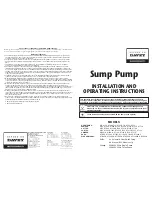
8. Operation
In normal operation, the DSS system operates independently.
Do not close the isolating valves on the outlet side of the
pump during normal operation. Otherwise the pressure re-
lief valve will open.
Do not close or block the vent hole of the dosing tank.
Do not contaminate the dosing tank.
•
Keep all isolating valves closed that are not in the line between
the dosing medium inlet and the injection point, for example:
- the valve of the calibration column,
- the inlet isolating valve and outlet isolating valve of the
dosing pumps,
- the sample valve or the bleed valve.
•
The operator decides which pump is the duty pump and which is
the standby pump.
9. Maintenance
WARNING
Toxic material
Death or serious personal injury
‐
Cleaning and maintenance must be carried out by au-
thorised and trained experts.
‐
Observe the material safety data sheets (SDS) of the
handled chemicals.
‐
Wear personal protective equipment when handling
chemicals.
‐
Shut down the whole system before any work at the
system components and lines.
‐
Depressurize the outlet line before starting mainte-
nance work.
‐
Drain and flush the dosing head, valves and pipes.
‐
Separate the whole system from the power supply be-
fore starting maintenance work.
‐
Safety devices, which have been deactivated during
maintenance, must be activated again immediately af-
ter maintenance.
Store important spare parts close to the DSS system.
9.1 Maintenance schedule
Daily checks
Inspect the tightness visually every day.
Regular checks (weekly or monthly)
Carry out regular checks weekly or monthly, depending on the type
of dosing pump and dosing medium. See the installation and
operating instructions of the dosing pump, and observe the
characteristic of the dosing medium.
•
Check the dosing performance.
•
Check the strainer. Clean the strainer, if necessary.
•
Maintain the dosing pump. See the installation and operating
instructions of the dosing pump.
•
Maintain the back pressure and pressure relief valve. See the
installation and operating instructions of the back pressure and
pressure relief valve.
•
Check all accessories such as pulsation dampeners and level
switches. Make sure that they are functioning properly.
Annual checks
•
Check the entire installation annually. Replace gaskets, O-rings,
diaphragms and other wear parts, if necessary.
After maintenance, check the proper functioning and tight-
ness of the entire installation.
10. Long-term shutdown
WARNING
Toxic material
Death or serious personal injury
‐
Some chemicals react with water, which can lead to
explosions. If your dosing medium can react with wa-
ter, flush the DSS system with a medium that is com-
patible with both water and the dosing medium.
1. Flush the dosing tank, lines, pipes, connections and pumps.
If your dosing medium is compatible with water, flush with water.
2. In case of danger of frost, remove remaining medium from
tanks, lines and connections with compressed air.
3. Disconnect the DSS system from the power supply.
11. Technical data
The values stated in the technical data of the components
must be observed.
For the entire system, the value of the component with the
most limited value applies.
The dosing medium must be in liquid state.
Observe the freezing and boiling points of the dosing me-
dium at operating pressure. Observe the temperatures
specified.
Observe the installation and operating instructions of the dosing
pump, and observe the characteristic of the dosing medium.
11
English (US)












































